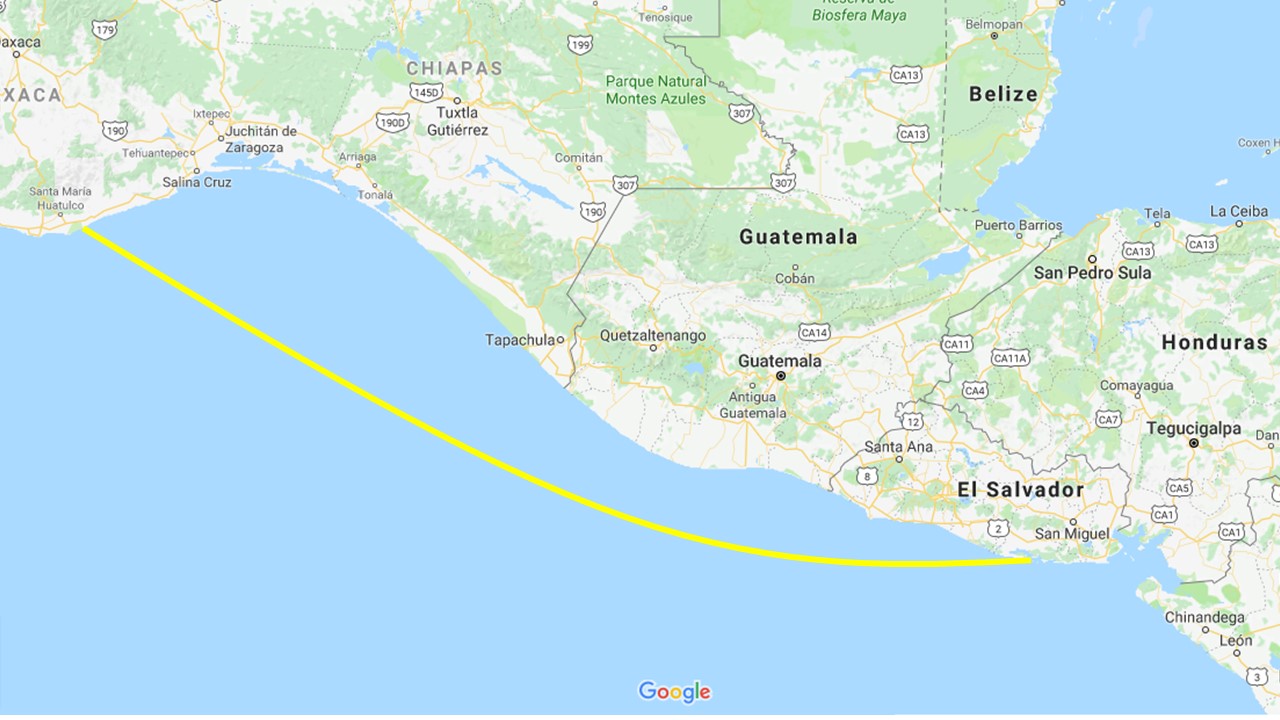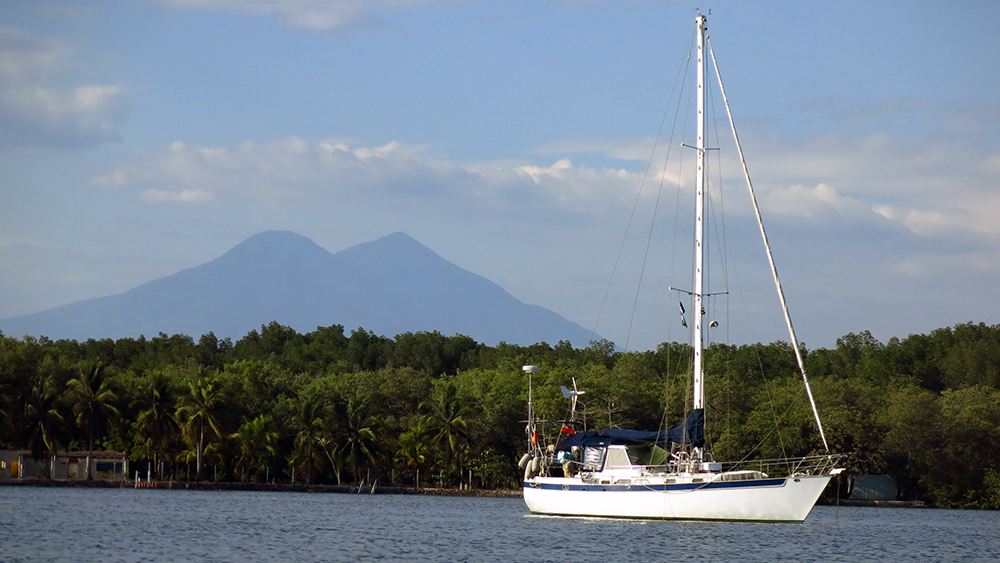
Distant Drummer anchored in the lagoon at Bahia del Sol with Volcan San Miguel behind
On the four day passage from Southern Mexico to El Salvador we had a mixed bag of weather. We had a fabulous sail across the Golfo de Tehuantepec, flying across the dark blue under a bright blue sky and a baking sun. Just as we were slacking out and exulting the sailing life the wind dropped and we motor-sailed for the next couple of days. We managed to raise the spinnaker and turn the engine off for a few hours, but the wind was frustratingly fickle and as soon as we set the sails it changed again. On the third night squalls off the Guatemalan coast kept us on our toes navigating a path between the fork and sheet lightening which was flashing across the sky to our left and right.
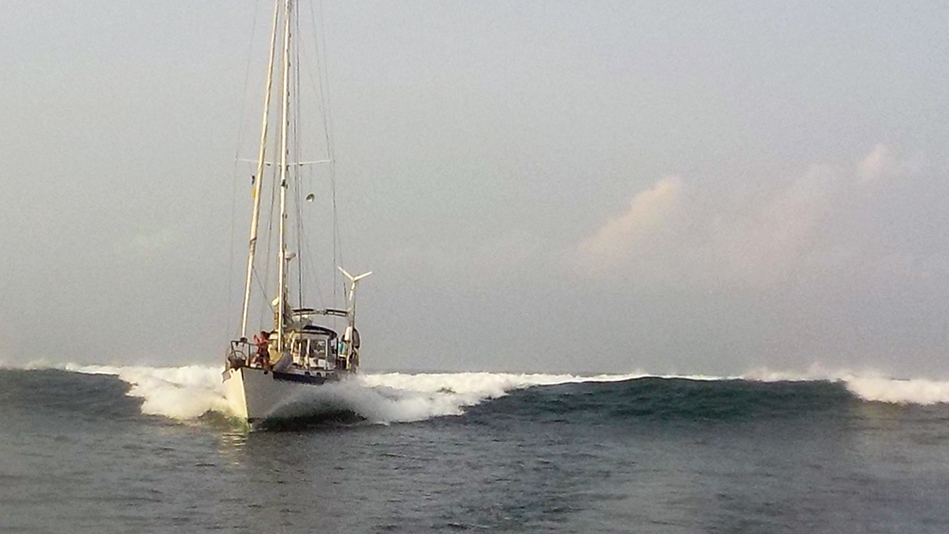
Surfing down the waves as we cross the bar into Bahia Jaltepeque
A shallow sand spit bars the entrance to Bahia Jaltepeque, our destination in El Salvador, and we were strongly advised not to try and cross it without a local guide. We anchored at the pilot pick-up point in the middle of the night and had to wait until day break to rendezvous with the pilot. The surf breaks continuously across the bar and the safest time to cross is at high tide. We stuck to the pilot boat like glue as we slipped between the breakers, white water crashing all around us and we topped out at 14kt as we surfed down the front of a roller. We found a great spot to anchor opposite the small marina at Bahia del Sol so once we had completed the formalities with Immigration, we were glad drop the pick and recover from the passage.

Delicious pupusas are a speciality of El Salvador
We were surprised to find quite a large group of cruising boats in the marina and quickly found out that we had gate-crashed the El Salvador Rally. However, we were made very welcome and within a few days had met everybody, had been invited to drinks and pupusas one evening and a pot luck barbeque the next day. This is a very sociable place and failing to show up for sundowners in the hotel pool is almost a criminal offence! Pupusas are the national dish of El Salvador. They are like a cross between a taco and a waffle and are stuffed with all sorts of delicious fillings, they can be a bit stodgy but are very moreish.
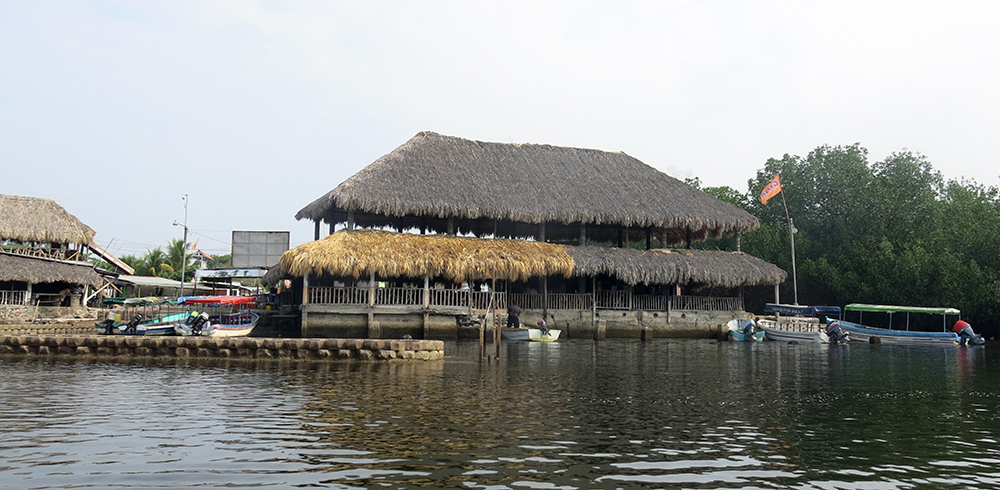
We tied the dinghy up in front of the palm fringed restaurant at San Luis de Herradurra
The lagoon borders a broad mangrove swamp which stretches westwards for more than 10km before the channels peter out into tendrils amongst the islands. The nearest grocery store in the town of San Luis de Herredura is a twenty minute dinghy ride through the swamp. In the early morning the channels are as smooth as a mirror and gliding along listening to the bird song and the wake sloshing quietly against the mangrove roots has got to be one of my best shopping trips ever! Dogs playing on the sand banks were a good indication that crocodiles were not active in the lagoon, and on further enquiry we found out that crocs were not a problem – they had been eaten during the civil war.
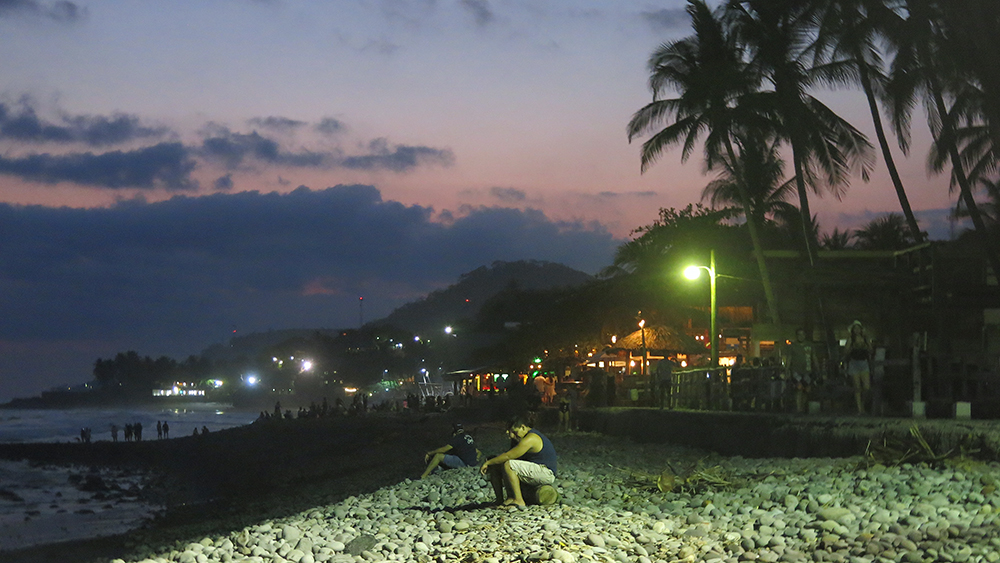
Surfers enjoying a few beers on the beach at El Tunco
Last weekend we hired a car and set off on a three day road trip to explore some of the hinterland. The roads are surprisingly good and you can drive across El Salvador in a day, or possibly two, but we limited ourselves to the western half of the country. The road along the coast wriggles between the bays and headlands and the steady Pacific swell lure surfers to the great shore and point breaks along the shore. We stopped for the night in el Tunco, a surfers hangout, and enjoyed a rum punch or two watching the surfing action as the sun went down.
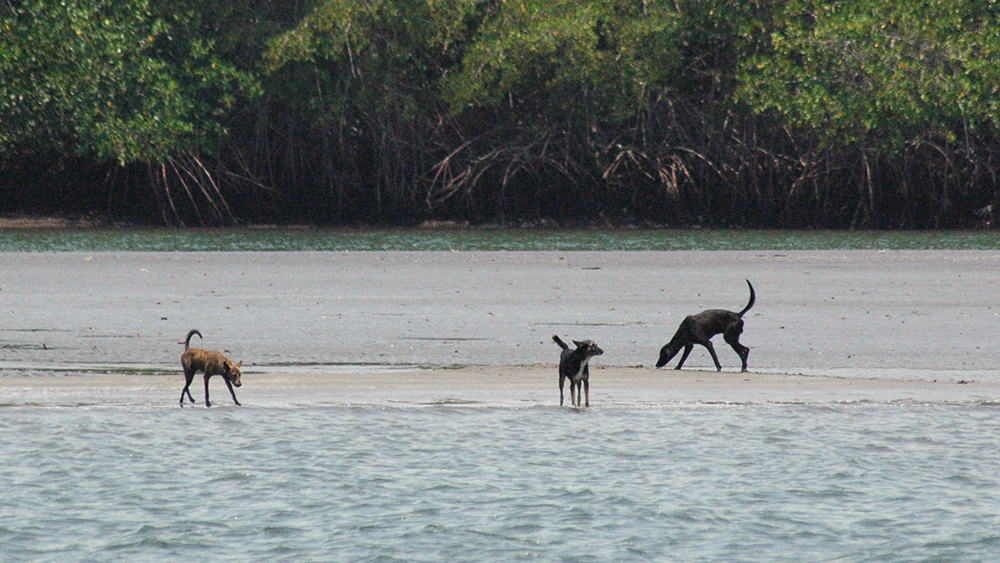
Dogs playing on the sand bar – a good indication there are no crocs around
The next day we climbed up into the chain of volcanic peaks which form the knuckles in the backbone of El Salvador. Dense arid bush covers the lower slopes but higher up the patchwork fields of coffee plantations decorate the landscape. The villages are poor; adobe huts line the road, small shops sell veggies and phone cards and Pilsner, the local beer, and skinny Brahmin cows wander along the verge. Larger towns are a bustle of dirty streets clustered around the imposing white façade of a church, built long ago by the Spanish invaders.
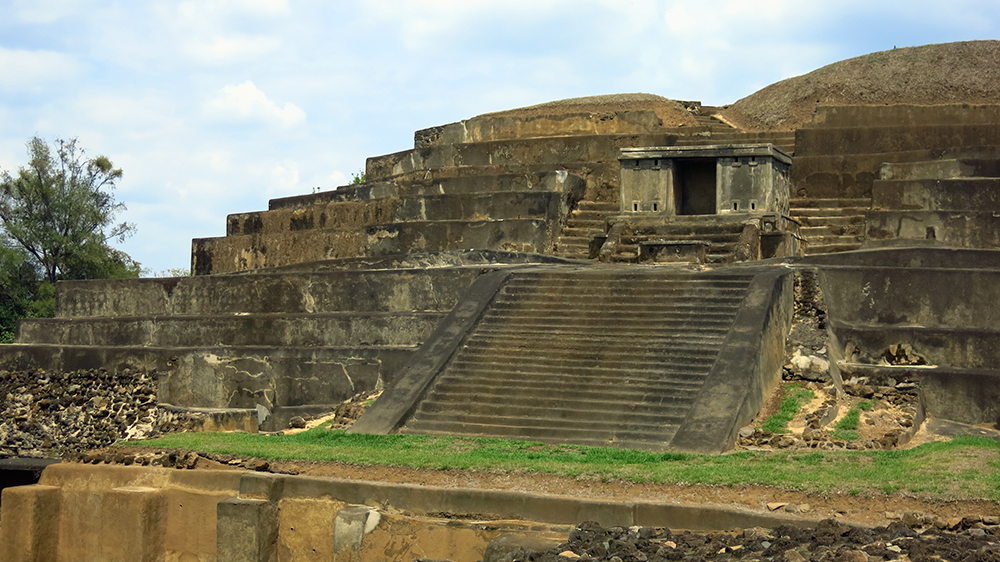
The slab for sacrifices at the Mayan step pyramid at Tazumal
Our destination was Tazumal where the remains of a Mayan pyramid have been unearthed and restored. The Mayan people have lived in the area of Cuscachapa since 1200BC and the ruins of several pyramids have been identified. The 23m high step pyramid at Tazumal is built of blocks of volcanic rock covered with a verneer of concrete which was added during the original restoration (believed to be similar to the original covering). A flight of steep steps runs up to pillared first terrace and a second longer flight leads up to the altar which looks very much like a butcher’s slab. I’m not sure if human sacrifices were made here but site is evocative of blood crazed priests and cruel, malevolent gods.
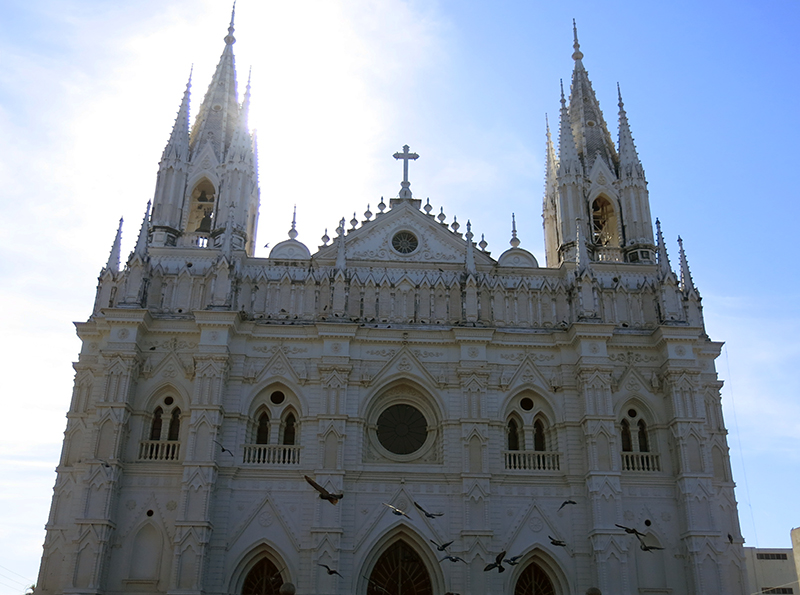
The beautiful white filigree facade of the cathedral at Santa Ana
Santa Ana was a great place to get back in touch with civilization. We found a lovely hotel and the next day enjoyed looking around the central plaza, flanked by the old theatre house and the exquisite white filigree cathedral. On the way to San Salvador, the capital city and shopping mecca for luxury starved cruisers, we climbed up to the rim of the San Salvador volcano. It was a bit hazy so we couldn’t enjoy the view, island hopping between the peaks of the volcanic chain but it was interesting to peer into the ash cone in the crater and wonder when it would next get active.
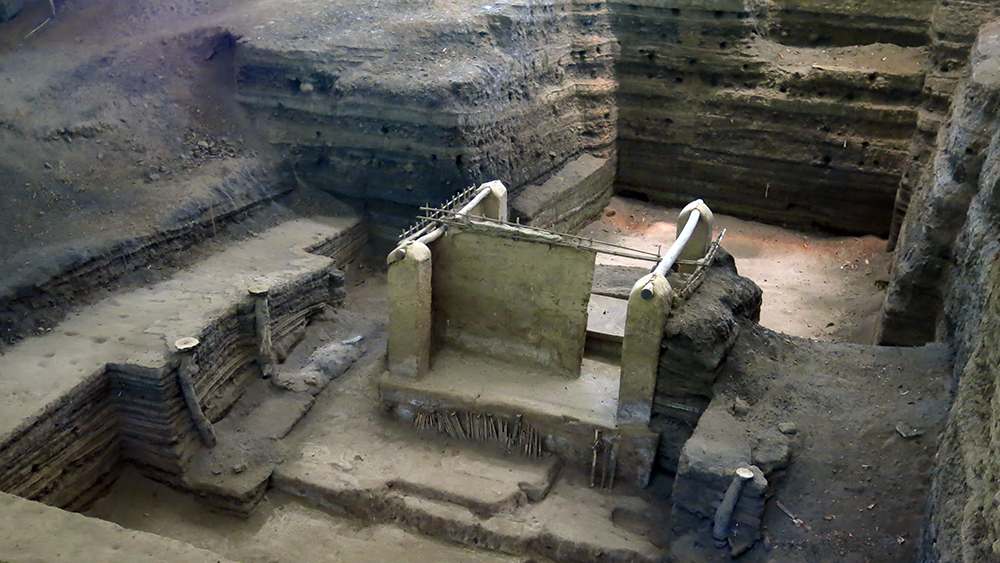
A storage hut in the ruins of the Mayan village at Joya de Ceren
The last tick on our list was Joya de Ceren, a Mayan village which was buried in ash during an eruption sometime around 600AD. Ten buildings have been excavated at the site including homes, storerooms, a kitchen and a shaman’s house, and even the row and furrows in the garden have been preserved. The mud walls of the houses were reinforced with bamboo, like a Mayan rebar, which I found strange – how did bamboo make it across the Pacific? It was an interesting snapshot of Mayan village life.
Now we are getting slowly organized to move on, to run the gauntlet across the sand bar and continue of migration. We’re no longer moving south but mostly eastwards along the coastline of Central America.
Hasta luego
Suzy
